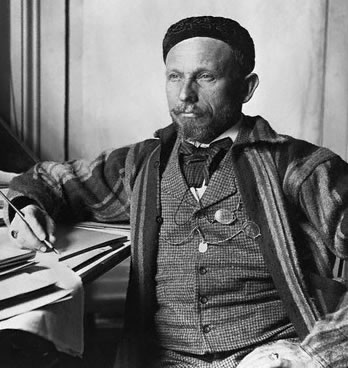SPECIAL FEATURE
by Barbara Schmidt
A History of and Guide to
UNIFORM EDITIONS OF MARK TWAIN'S WORKS
"Well, my book is written -- let it go. But if it were
only to write over again there wouldn't be so many things left out. They burn
in me; & they keep multiplying & multiplying; but now they can't ever
be said. And besides, they would require a library -- & a pen warmed up
in hell."
- Samuel Clemens to William Dean Howells, 22 Sept. 1889
Chapter 19
Brief Overview of Volume 16:
A Connecticut Yankee in King Arthur's Court
History of the 1889 First Edition
Samuel Clemens's interest in writing A Connecticut Yankee in King Arthur's Court was sparked, in part, by Thomas Malory's book Le Morte d'Arthur given to him by George Washington Cable in December 1884. Centered around a time traveler who goes from 19th-century Connecticut to 6th-century England, the book is a satire and social commentary against institutions and ideology that support monarchy, slavery and organized religions. Clemens spent about four years writing the novel and completed the manuscript in April 1889. The novel consists of about 119,000 words including a preface, prelude and 44 chapters. Charles Webster had left Webster and Company in 1888 and the book's production was supervised by Frederick J. Hall (b. 1860 - d. 1926). Daniel Carter Beard was hired for $3,000 to illustrate the work.
Daniel Carter Beard, Illustrator
|
Daniel Carter Beard (b. 1850 - d. 1941) was born in Cincinnati, Ohio. His father, James Henry Beard, was a portrait artist and member of the National Academy of Design. Daniel Carter Beard was an avid outdoorsman, author and illustrator. In Ohio he studied civil engineering and later worked for the city of Cincinnati. In 1874 he worked with the Sanborn Map and Publishing Company. In 1878 the Beard family moved to New York where he studied at the Art Students League. At age twenty-eight he began a successful career as a freelance commercial artist. Connecticut Yankee was his first Mark Twain project. He would later illustrated other Mark Twain works including The American Claimant (1892); "The £1,000,000 Bank Note" (1893); "The Esquimau Maiden's Romance" (1893); "Traveling with a Reformer" (1893); and Tom Sawyer Abroad (1894). By 1894 Beard was also teaching drawing at New York's School of Applied Design. Beard provided more illustrations for the 1897 edition of Following the Equator than any other artist. In 1905 Beard became editor of Recreation magazine and founded the Sons of Daniel Boone, a group he merged with the Boy Scouts of America in 1910. |
 Daniel Carter Beard |
Clemens once described Beard as "the only man who can correctly illustrate my writings, for he not only illustrates the text, but he also illustrates my thoughts" (Rasmussen, p. 589). For A Connecticut Yankee, Beard drew about 400 illustrations in 70 days; 220 were selected for publication. According to Mark Twain scholar, Beverly David, "Beard expanded and elaborated upon Twain's ideas in many cases, frequently investing his drawings with a fiercer rhetoric than Twain employed in the text" (David and Sapirstein, 1996). Beard also used faces of recognizable public figures for the faces of Twain's characters including Queen Victoria as a "troublesome sow" and financier Jay Gould as a sadistic "Slave Driver." Beard's drawings depicting a cleric controlled by Satan along with other caustic images related to religion were potentially offensive to churchgoers. Clemens supported Beard's interpretations writing him, "to my mind the illustrations are better than the book -- which is a good deal for me to say, I reckon" (David and Sapirstein, 1996). He also wrote Beard, "There are hundreds of artists who could illustrate any other book of mine, but there was only one who could illustrate this one. Yes, it was a fortunate hour that I went netting for lightning-bugs and caught a meteor. (Paine, p. 888). However, Clemens and Fred Hall were aware of the power of the illustrations to offend and when the second sales prospectus was being prepared for the book, they considered leaving out anything that might offend the church and include only illustrations related to ridiculing royalty and nobility.
In November 1889 Century Magazine published an illustrated extract from the work. Webster & Company issued the book on December 12, 1889. Andrew Chatto issued a British edition the next day under the title A Yankee at the Court of King Arthur. According to Beard, powerful Catholic representatives found the book offensive, especially his illustrations. Beard wrote, "my work was boycotted for many years by all the prominent magazines, with the exception of Life and Cosmopolitan. I, too, went practically broke" (Beard, 1939, p. 338).







